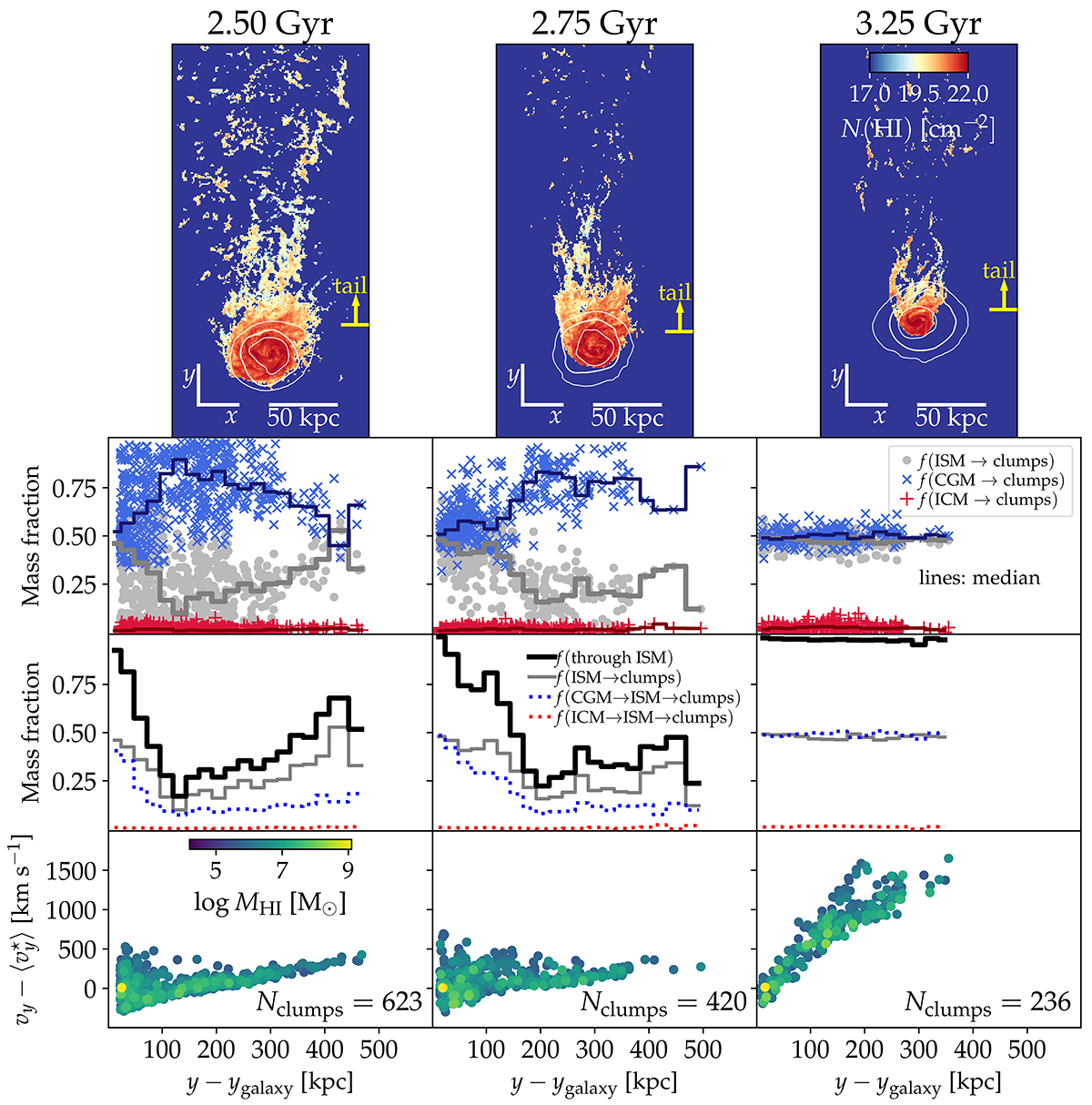Fig. 3.

Download original image
H I column density (upper panels); mass fraction of tail clumps initially residing in the ISM, CGM, or ICM (second row); mass fraction of different paths through the ISM from Table 1 (third row); and the mass-weighted vy-velocity of each tail clump (lower panels) for three times (2.50, 2.75, and 3.25 Gyr). We note that the central passage took place between the second and third analysed time. The white contours indicate the surface density of stars. The yellow arrow marks the y-value, which divides the tail from the galactic disc (ygalaxy + 1.1RHI). The majority of the mass in the tail clumps initially resided in the CGM for these three snapshots. Well before the central passage (at 2.50 Gyr), the dominant mass fraction of the tail’s H I clumps were accreted directly from the CGM. After the central passage (at 3.25 Gyr), about half of the gas in the tail initially resided in the CGM, but it was almost exclusively accreted onto the ISM before being stripped and finally assembled in the jellyfish tail. The other half of the gas originates in the initial ISM that was already present at t = 1 Gyr.
Current usage metrics show cumulative count of Article Views (full-text article views including HTML views, PDF and ePub downloads, according to the available data) and Abstracts Views on Vision4Press platform.
Data correspond to usage on the plateform after 2015. The current usage metrics is available 48-96 hours after online publication and is updated daily on week days.
Initial download of the metrics may take a while.


